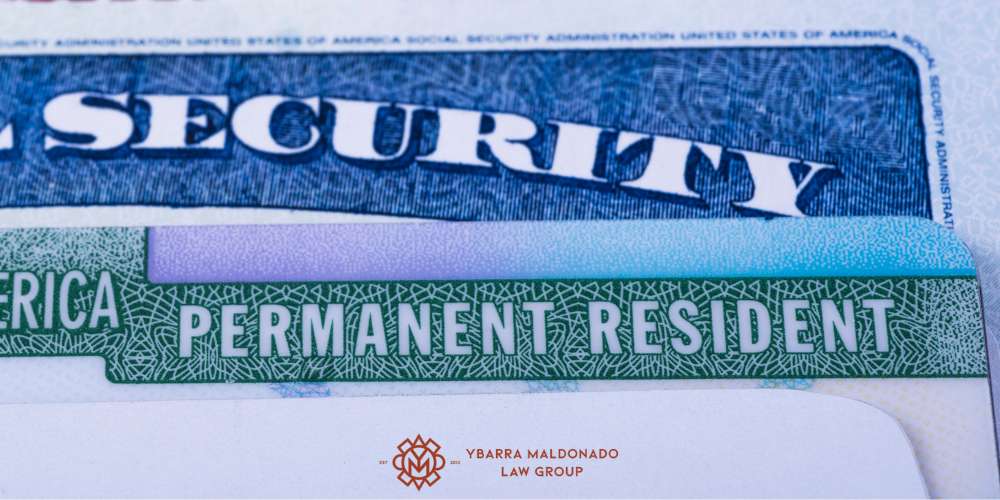Immediate Relative Categories Explained
PRACTICE AREAS
Table of Contents
DON’T HESITATE TO REACH OUT TO US!
Our Law Firm is committed to becoming the best Law Firm for Latino, migrant, and Spanish speaking communities in Arizona.
Immediate Relative of US Citizen Visa

In terms of family immigration petitions, we typically see two major types of petitions. These types are family preference categories and immediate relative categories. An immediate relative of US citizen generally has higher priority for obtaining a green card than a family preference relative would. Applying for family-based visas can be a complicated process, so it’s important to seek help from an experienced immigration attorney for your case.
At Ybarra Maldonado Law Group, our immigration lawyers in Phoenix have extensive experience helping individuals apply for immigrant visas. If you are a petitioner interested in helping your immediate family member immigrate to the United States or become a lawful permanent resident, we’re here to help. To schedule a case evaluation about your case, please call our office at 602-910-4040 today.
What Is Considered Immediate Family in Immigration?
When it comes to immigrant visas, the term “immediate family” can mean something a little different from how we normally think of it. According to the USCIS, someone is an immediate relative of an immigrant if they meet any of the following family relationships.
- Spouse of a United States citizen
- Unmarried child under 21 years old of a U.S. citizen
- Parent of a U.S. citizen if the citizen is 21 or older
Why Is an Immediate Relative Visa Preferable?
As we mentioned before, there are two main categories of family immigrant visas: immediate family member and family preference immigrant visas. Of the two, the immediate family category is preferable. This is because immediate relative categories enjoy higher priority than family preference categories.
Unlike family preference visas, immediate relative visas are unlimited in number, meaning applicants will not need to wait long periods of time for a visa number to be available. Family preference visas tend to have a longer wait associated with them because USCIS only issues so many each year.
Additionally, certain bars of admissibility that apply to family preference applicants do not apply to immediate relative applicants. Suppose an intending immigrant family member has an immigration violation on their record, such as overstaying their visa or working without proper authorization. Immediate relative applicants likely wouldn’t be deemed inadmissible for these reasons, but a family preference applicant likely would.
Immediate Family Visa Categories
Both the immediate family and family preference categories have 5 total categories. On the immediate relative side, these categories generally apply to spouses, parents, and unmarried children of United States citizens. We outline each of these categories below.
IR1 Visa Category
This immigrant visa category includes spouses of United States citizens.
IR2 Visa Category
This immigrant visa category includes any unmarried child or unmarried children under 21 years old of a U.S. citizen.
IR3 Visa Category
This immediate relative category includes orphans that were adopted abroad by a United States citizen.
IR4 Visa Category
This immediate relative category includes orphans that will be adopted in the United States by a U.S. citizen.
IR5 Visa Category
This immediate relative category includes parents of a U.S. citizen who is at least 21 years old.
What Are the Eligibility Requirements for Immediate Relatives?

Generally, a family-based immigrant visa petition begins the same way regardless of whether you are filing in the immediate relative or family preference category. The first step is for the United States citizen or permanent resident sponsor to file Form I-130, Petition for Alien Relative, with USCIS. This form both establishes a qualifying relationship between the petitioner and the intending immigrant, as well as requests a visa number.
Other, more specific requirements include the following.
- The U.S. citizen who is sponsoring the immigrant relative must file Form I-130 on behalf of that relative. On this form, the petitioner must establish a qualifying relationship with their relative. Qualifying relationships include spouses, unmarried children under 21 years old, and parents.
- The petitioner must provide evidence, such as birth or marriage certificates, to establish the qualifying relationship.
What Are the Grounds of Inadmissibility for an Immediate Relative Immigrant Visa?
As we mentioned before, certain inadmissibility bars apply to family preference immigrants, but not immediate relative immigrants. If a family preference immigrant were to overstay their visa, it would likely constitute a denial of status adjustment. However, there are exceptions for immediate relative immigrant visas. Despite certain violations, immediate relatives may still be eligible to adjust status even if they do the following.
- Is currently working or has worked without authorization in the United States
- Does not have a lawful immigration status when they file for adjustment of status
- Has had their lawful status lapse for any period of time since their entry into the United States
- Has violated any terms of their nonimmigrant status
How to Apply for a Green Card as an Immediate Relative of a U.S. Citizen

Once USCIS approves the I-130 petition, either they or the National Visa Center will assign a visa number to the intending immigrant. They may then apply for a green card or for lawful permanent resident status. They can do this either through consular processing or adjustment of status. A priority date isn’t quite as important for immediate relatives, as they are not subject to the same wait times as those in family preference categories.
Consular Processing
The most common method for applying for an immigrant visa is consular processing. This is the method through which intending immigrants can apply for a green card from outside the United States.
Adjustment of Status
If the immigrant is already inside the United States, they can apply to adjust status and become a green card holder. Immediate relatives of U.S citizens will apply for adjustment of status by filing Form I-485. In some cases, they can attempt concurrent filing, which allows them to file both I-130 and I-485 at the same time. This is a popular option that could potentially shorten and simplify the process.
Contact the Family Immigration Attorneys at Ybarra Maldonado Law Group Today
At Ybarra Maldonado Law Group, we have extensive experience helping those in both family preference categories and immediate relative categories file their immigrant petitions. If you are looking to apply for a green card for yourself or a family member, our team is here to help you along every step of the process. To schedule a case evaluation with us about your case, please call today at 602-910-4040.
TELL US YOUR STORY.
YMLG LEADERSHIP
Our YMLG Directors are Committed to excellence and client care, our team leads with integrity and expertise, ensuring you receive the highest service and support.
DONT WAIT. LET OUR LAW FIRM HELP YOU.
